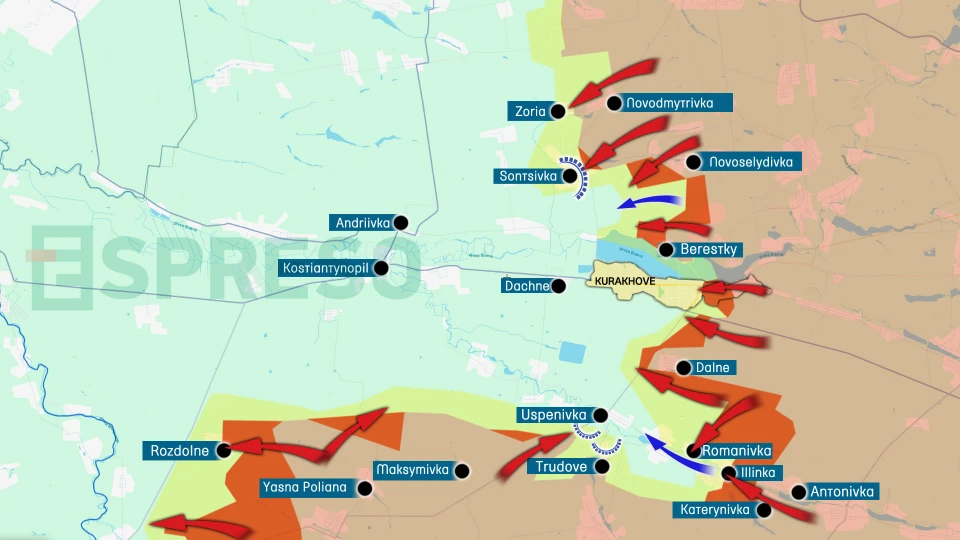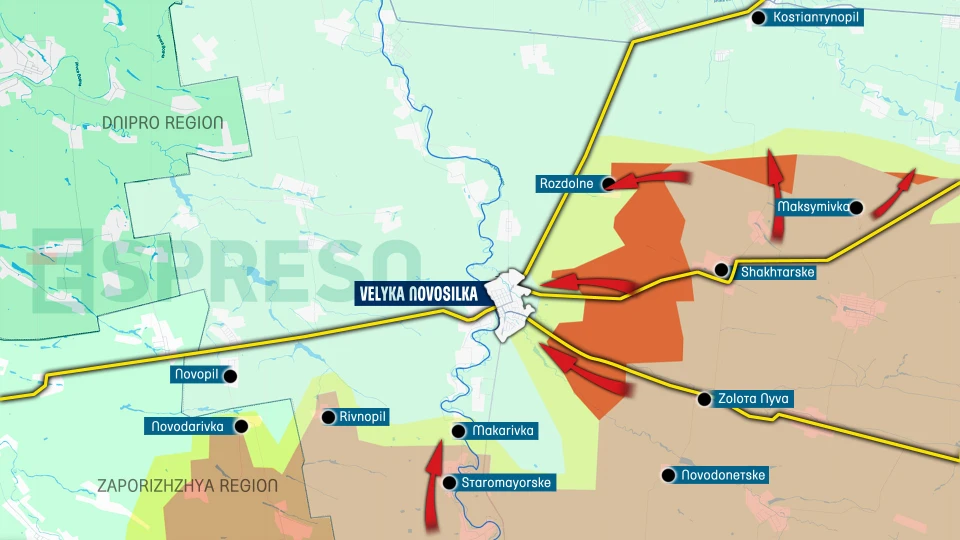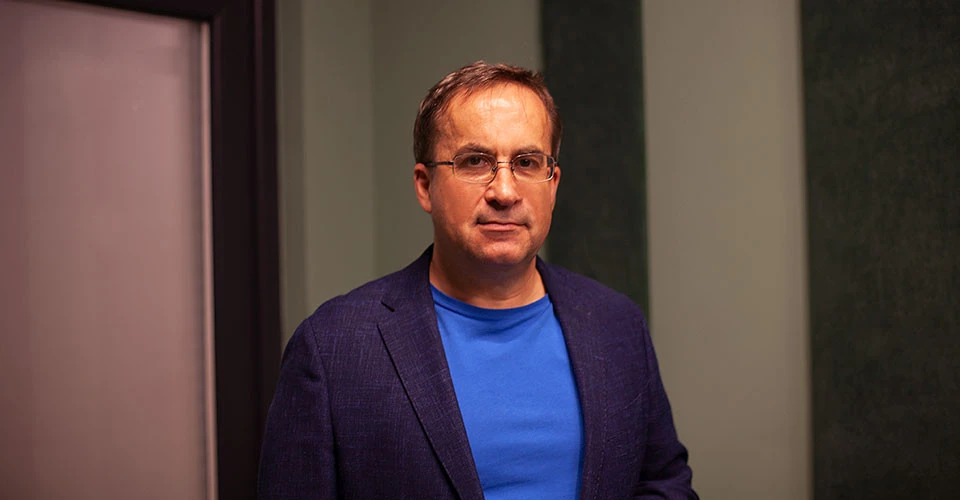
New counteroffensive, frontline situation, and European military in Ukraine. Serhiy Zgurets' column
The media has made unexpected claims about a new Ukrainian counteroffensive. Meanwhile, the Ukrainian Armed Forces continue their complex defensive campaign in the east
Ukraine's mew counteroffensive
Let’s start with the claims about a new counteroffensive, which were brought up by Commander-in-Chief Oleksandr Syrskyi during his meeting with military bloggers. I wasn’t at the meeting, so I can’t confirm anything directly. I believe Syrsky's words are more accurate: the Ukrainian Armed Forces must halt the enemy, but victory is unattainable if Ukraine’s military focuses solely on defense. It must take the initiative and launch a counteroffensive.
If that’s the case, it makes sense. We’re talking about different formats of combat that Ukrainian forces are carrying out right now. Counterattacks are happening, though on a limited scale, while a full-scale counteroffensive is more of a possibility for 2025. Achieving that will depend on several factors, many of which are nearly impossible to predict at this point.
Defensive operation of the Ukrainian Armed Forces
Right now, Ukraine is in the middle of a long and grueling defensive campaign against the ongoing Russian offensive, which ramped up again in November last year. What’s unusual here is the sheer duration of the fighting — there haven’t been any operational pauses for over a year. In fact, the zone of active combat is expanding, Russia has brought in more troops, and their attacks are getting more intense every day.
Currently, there are over 200 Russian attacks happening daily, far more than during previous phases. Russian losses are massive, but they remain focused on reaching the borders of Donetsk and Luhansk regions — or even further. That’s their plan, not Ukraine's, and the actions of ukrainian Armed Forces will make sure those plans don’t succeed.
However, the situation is extremely tough in several directions, including Pokrovsk-Kurakhove, Chasiv Yar, Toretsk, and now Velyka Novosilka. Commander-in-Chief Syrskyi stated that, in the Pokrovsk direction, the ratio of Russian personnel to Ukrainian defenders is 5 to 1 — meaning their manpower outnumbers Ukraine's fivefold.
What’s happening on the ground? Let’s take a closer look at the Kurakhove direction. Russia is currently advancing on Kurakhove from multiple directions. They’re trying to break through from the north, from Sontsivka to Stari Terny. Stari Terny is critical because it’s on the supply route for Kurakhove.

We don’t see Stari Terny on the map, but Dachne is marked — Stari Terny is actually located near it. A dam was blown up there. I believe Ukrainian units destroyed the dam to stop Russian forces from advancing north in this direction. In Kurakhove, fighting has already reached the city itself. Estimates suggest that roughly 60% of the territory there is now, relatively speaking, under Russian control. In the city center, fighting has moved closer to the high-rise blocks. This is a key area for holding the defense, but Russian forces are intensifying pressure on Ukrainian defenses in this zone.
To the south, Ukrainian troops appear to be systematically withdrawing from the pocket along the Sukhi Yaly River, which includes Ilyinka, Yelyzavetivka, and Romanivka. Ukrainian soldiers have already pulled out from there. Now, Hanivka and Veselyi Hai remain. This clearly indicates that the encirclement repeatedly claimed by Russian commanders is nonexistent. This planned withdrawal is proceeding, in my view, quite effectively, allowing Ukrainian forces to carry out further operations as long as Uspenivka holds. Still, the Russians are increasing their pressure on Kurakhove from other directions.
The second critical area is Velyka Novosilka. Over the past week, reports suggest dynamics there are similar to Kurakhove, with Russian forces attempting flanking maneuvers and encirclement from multiple directions. The fight here appears to center on controlling the roads leading to Velyka Novosilka. On one front, there’s Rozdolne, where Russians are attempting to sever the highway to Bohatyr. Nearby is Novyi Komar, with another road heading to Velyka Novosilka. Another route, west of the settlement, leads from Rivnopil toward Novosilka. Russian forces are also pushing here.

Ukrainian units are defending across all these directions, but Russia is advancing. From the east, Russian troops have entered the settlement itself, and fighting has reached the first buildings. The situation in Velyka Novosilka is especially concerning, with Russian advances from the east highlighting vulnerabilities in the fortifications. The Russians have taken advantage of this and advanced over 8 kilometers in less than a week, now reaching the eastern outskirts of Velyka Novosilka.
This direction remains incredibly challenging. I hope Ukraine's General Staff takes decisive action. However, Russia's advantage here is significant, and it will require urgent measures — fortifications, if there’s time, mining operations, and increased supplies of weapons — to strengthen this front.
Frontline dynamics and geopolitical shifts in the U.S. and Europe
If you read the foreign press, the message is clear: everything is lost, everything is falling apart, and everything is playing into Russia’s hands.
Mykhailo Samus, a military expert and director of the New Geopolitics Research Network, as well as an expert at the Center for Army, Conversion, and Disarmament Studies, shared his take on the current dynamics at the front line and what can be concluded from this stage of the confrontation with Russia.
“Yes, it’s true. The tone of the foreign press and publications mostly suggests that Russia is advancing nonstop, has broken through the front, and that the Ukrainian army has no chance to change or stabilize the situation. The conclusion they’re drawing is that after Trump’s inauguration, Ukraine will need to prepare for either capitulation or, at the very least, negotiations with Putin. But let’s look back for a moment. In April, they said the front had collapsed and that Pokrovsk would fall in days. In August, the same thing: Pokrovsk is just days away. On the other hand, analysts, as well as you and I, have been discussing how taking Pokrovsk requires Russia to strengthen and expand its southern flank. And that’s exactly what they’re trying to do now,” Samus explained.
He pointed out that it’s already late November.
“And there’s no guarantee that all these advances we’re talking about now — whether in Kurakhove or Velyka Novosilka — will lead to the kind of front-line breakthrough Russia hopes for. Every time we talk about Russian movements or advances, the same question comes up: Why is the Ukrainian army acting this way? Why are they retreating? Why are there continuous territorial losses? My take is this: based on the theory of operational warfare, what the Ukrainian army is doing, particularly on the southern flank near Pokrovsk and in the Kurakhove direction, is classic maneuver defense. The goal here isn’t to hold the territory but to inflict maximum losses on the enemy and buy time to set up stronger defensive positions where it makes sense,” he said.
According to Samus, this approach is exactly what we’re seeing. He recalled the increase in Russian activity near Vovchansk six months ago in the spring.
“At that time, the Russians carried out a massive PSYOP, and the Western media fell for it, claiming Kharkiv would soon be captured. But look what actually happened. The enemy was stopped there. Despite periodic attempts to become more active, there’s no chance for a breakthrough in that area. And if there’s no chance for a breakthrough near Vovchansk, it means the Kupyansk direction is relatively stable. Of course, the Russians are constantly testing it, and in some areas, they’ve made small advances. But the front hasn’t collapsed in Kupyansk. And if the front holds there, it also means the Lyman direction — which is critical for protecting the Kramatorsk-Slovyansk area — will hold too. The same applies to Chasiv Yar. How many people said six months ago that it was practically under Russian control? Yet, the situation is the same. Constant assaults, massive Russian losses, and the Ukrainian army continues to hold. It’s the same with Toretsk. The Russians make progress, then Ukrainian forces counter and reclaim the area,” Samus emphasized.
He stressed that Ukrainian troops maintain positional defense where they can, and where that’s not possible, they adopt maneuver defense. And in his view, they’re doing it successfully.
“Let me remind you, the main goal of maneuver defense is to maximize enemy losses. Just look at the daily General Staff reports — about 1,500 Russian troops killed, along with dozens of mechanized units, artillery, and weapons destroyed. So, no, I wouldn’t say everything is lost or that the front has collapsed. Sure, there are problems — failures in certain areas, inefficient management, and issues with domestic ammunition production. These need to be addressed seriously, even harshly, because they could be systemic or isolated problems. War is a complex matter, and painting everything in negative colors doesn’t help. We’re all responsible for what’s happening at the front. Everyone has a role, and there’s no room for just standing on the sidelines and criticizing,” the expert concluded.
Security and defense of Europe
The Ukrainian Defense Minister is currently in South Korea, negotiating specific supplies. I hope Seoul responds positively, despite the peculiarities of its approach toward the United States in general. Meanwhile, the U.S. has stated that Ukraine will have sufficient weapons next year to continue combat operations. This now brings Europe into focus.
"It’s worth noting that the new European Commission takes office on December 1. In fact, it was officially approved, and for the first time in history, a position or institution has been created — a European Commissioner for Defense. It sounds paradoxical, but this is the first time Europe has assigned someone to coordinate the defense and security efforts of EU countries. Until now, it turns out, no one was handling this. Sure, there were projects, actions, even agencies like the European Defense Agency and other structures that supposedly addressed these issues, but no one took on the job of coordination," Samus said.
Mykhailo Samus emphasized that Europe had not developed a unified strategy to promote: "This European Commissioner Kubilius is a representative of Lithuania — a very pro-Ukrainian figure and a politician who will likely focus on shaping strategic, conceptual approaches to a unified European policy on defense and security, and then begin implementing it. What’s important here? Europeans need to understand that Trump isn’t to blame for Europe’s inability to resist Russian aggression."
He also pointed to Trump’s comments during his first term, which highlighted the need for Europe to defend itself.
"When Trump said in his first term that Europe isn’t ready, that Europe needs to spend more on defense and security, he was mocked. Merkel even approached him, saying, 'Do you really want a Germany with a strong army?' And Trump replied, 'Yes.' Merkel, of course, was referencing World War II, but it’s time to realize that the U.S. or any country outside Europe won’t take responsibility for Europe’s defense and security. And honestly, it would be strange if they did. The EU is one of the wealthiest regions in the world, with access to advanced technology. Ukraine — being part of Europe and, I hope, soon part of the EU — plays a critical role in security and defense," he emphasized.
He is convinced that Europe must take ownership of its defense: "We need to develop all self-sufficient components — strategic, operational, and tactical — to counter Russia, because Russia isn’t going anywhere. Whether there’s a freeze or other developments with Trump’s return, the Russian threat will persist for another decade. That’s why Europeans must be ready to independently confront this aggressive force."
European military contingents in Ukraine
A new wave of discussion is sweeping through European media about the possibility of sending military contingents from NATO or European countries to Ukraine. It began with statements from representatives of the Estonian Foreign Ministry, followed by a publication in La Repubblica, suggesting that the UK and France could potentially deploy troops to Ukraine.
"I think this stems from recent remarks by President Macron, who once again emphasized that France is considering all possible options to support Ukraine. He stated there are no red lines, and the deployment of troops is not excluded. However, I believe it’s too early to talk about specifics or practical steps. For one, the European Union doesn’t have a unified military force, despite several joint projects. Battle Groups have existed since 2007, along with other formations, but these don’t qualify as an EU joint military force. Their components remain under the sovereignty of national governments and laws, which makes deployment a complex process. Each use requires approval through national procedures — in Germany, France, the Netherlands, and so on. This creates significant challenges," the expert explained.
He noted that while France could independently decide to assist Ukraine, it’s within France’s rights and Ukraine’s sovereignty to invite such support.
"As for the European Union and collective forces, I don’t think it’s realistic at the moment. Moving in that direction would require steps to ensure greater self-sufficiency, which involves forming collective forces that transcend national sovereignty. This is critical, similar to how NATO operates. European forces could become a part of NATO — a self-sufficient European division of NATO — without duplicating NATO’s efforts. For instance, a 50:50 arrangement with the United States, Canada, and the UK on one side, and the European Union on the other. Currently, the United States contributes 70-80% of NATO’s resources and military capacity, which is unfair. That’s why Trump repeatedly questioned why the U.S. shoulders so much of the burden.
For now, I don’t see this as feasible, especially given the turbulent political dynamics globally and regionally, as well as the lack of necessary mechanisms," concluded Mykhailo Samus.
- News












































